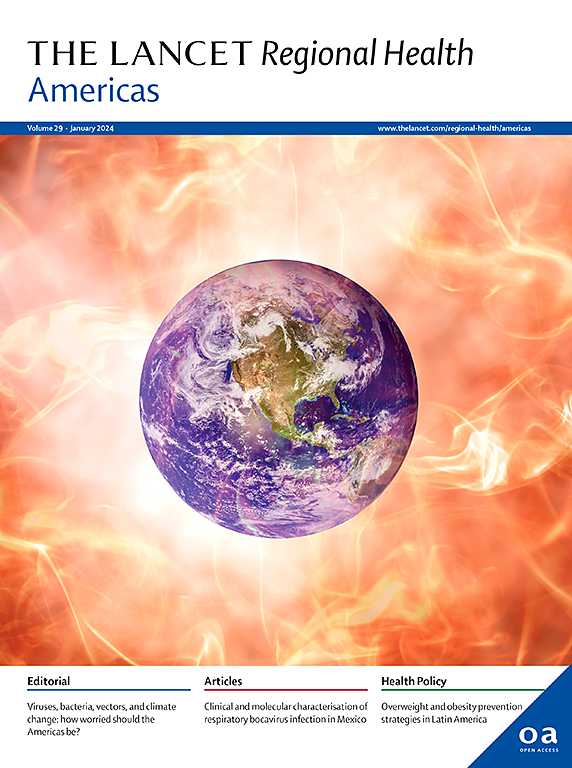预测非小细胞肺癌患者脑转移发展的nomogram:一项使用常规医疗记录的回顾性分析
IF 7
Q1 HEALTH CARE SCIENCES & SERVICES
引用次数: 0
摘要
脑转移(BrM)是非小细胞肺癌(NSCLC)患者中常见的并发症。虽然有关于晚期非小细胞肺癌中枢神经系统基线筛查的指南,但早期疾病的监测策略仍然有限。本研究的目的是利用现成的临床信息,建立一个随时间变化的BrM风险预测图。方法:我们对宾夕法尼亚州立大学健康中心的非小细胞肺癌患者进行回顾性队列分析。我们的目标是:(1)系统地评估现有BrM风险预测算法的性能;(2)构建用于非小细胞肺癌BrM风险预测的新范式图。使用l1正则化的cox比例风险模型,我们预测了6个月、1年和2年随访间隔的BrM风险。患者队列包括1904例患者(中位年龄68岁,范围38-94岁,BrM发病率22.8%)。该队列包括1059名男性(55.6%)和845名女性(44.4%)。在该队列中,92.8%的患者为白人(n = 1766), 1.0%为亚洲人(n = 19), 4.0%为黑人(n = 77), 2.2%为其他种族(n = 42)。Zhang 2021模型在预测我们的队列中BrM发病率方面表现最佳,AUROC为0.91 (95% CI: 0.87, 0.95)。我们开发了两种新模型:一种是包含临床和诊断时影像学数据(cTNM分期、诊断时年龄)的基线模型,另一种是包含额外临床和治疗数据(颅外转移部位数量、既往放疗、化疗、手术和组织学)的扩展模型(https://nmikolajewicz.shinyapps.io/nomogram_wilding2024/)。虽然两种模型的短期表现相似,但扩展模型对长期结果的预测能力更强(3年AUROC为0.91)。我们的形态图完全依赖于患者记录中常规记录的临床特征,因此不需要额外的调查。这些临床可获得的BrM预测图将有助于预后建模、风险分层、改进中枢神经系统筛查指南和患者咨询。本文章由计算机程序翻译,如有差异,请以英文原文为准。
A nomogram to predict development of brain metastasis in non-small cell lung cancer patients: a retrospective analysis using routinely available medical records
Background
Brain metastases (BrM) are a frequent complication among patients with non-small cell lung cancer (NSCLC). While guidelines exist for baseline CNS screening in advanced NSCLC, surveillance strategies for early-stage disease remain limited. This study aimed to develop a time-dependent BrM risk prediction nomogram using readily available clinical information.
Methods
We analyzed a retrospective cohort of NSCLC patients at Penn State Health. Our objectives were to (1) systematically evaluate the performance of existing BrM risk prediction algorithms and (2) construct novel nomograms for BrM risk prediction in NSCLC. Using Cox-proportional hazard models with L1-regularization, we predicted BrM risk at 6-month, 1-year, and 2-year follow-up intervals.
Findings
The patient cohort included 1904 patients (median age 68 years, range 38–94 years, BrM incidence 22.8%). The cohort included 1059 males (55.6%) and 845 females (44.4%). Of the cohort, 92.8% of patients identified as White (n = 1766), 1.0% as Asian (n = 19), 4.0% as Black (n = 77), and 2.2% as another race (n = 42). The Zhang 2021 model demonstrated the highest performance in predicting BrM incidence in our cohort, achieving an AUROC of 0.91 (95% CI: 0.87, 0.95). Two novel models were developed: a baseline model incorporating clinical and imaging data at diagnosis (cTNM stage, age at diagnosis), and an extended model including additional clinical and treatment data (number of extracranial metastatic sites, prior radiotherapy, chemotherapy, surgery, and histology) (https://nmikolajewicz.shinyapps.io/nomogram_wilding2024/). While both models showed similar short-term performance, the extended model demonstrated superior predictive capacity (AUROC 0.91 at 3-years) for longer-term outcomes. Our nomograms rely exclusively on clinical features routinely documented in patient records, thereby requiring no additional investigations.
Interpretation
These clinically accessible nomograms for BrM prediction will facilitate prognostic modeling, risk stratification, refinement of CNS screening guidelines, and patient counseling.
Funding
None.
求助全文
通过发布文献求助,成功后即可免费获取论文全文。
去求助
来源期刊

Lancet Regional Health-Americas
Multiple-
CiteScore
8.00
自引率
0.00%
发文量
0
期刊介绍:
The Lancet Regional Health – Americas, an open-access journal, contributes to The Lancet's global initiative by focusing on health-care quality and access in the Americas. It aims to advance clinical practice and health policy in the region, promoting better health outcomes. The journal publishes high-quality original research advocating change or shedding light on clinical practice and health policy. It welcomes submissions on various regional health topics, including infectious diseases, non-communicable diseases, child and adolescent health, maternal and reproductive health, emergency care, health policy, and health equity.
 求助内容:
求助内容: 应助结果提醒方式:
应助结果提醒方式:


